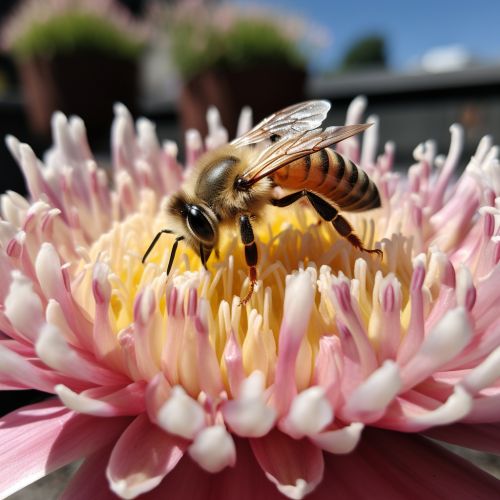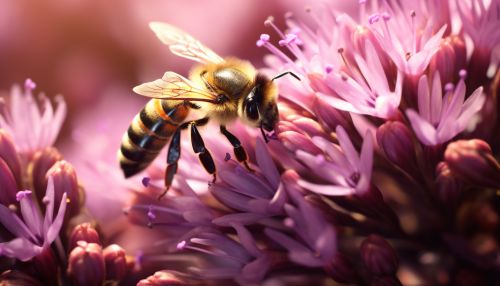Insect cognition
Introduction
Insect cognition refers to the mental capabilities of insects, including learning, memory, and decision-making. It is a field of study that intersects ethology, ecology, neurobiology, and cognitive science. Insects, despite their small size and relatively simple brains, exhibit a surprising degree of cognitive sophistication.


Learning and Memory
Insects are capable of both associative and non-associative learning. Associative learning is when an insect makes a connection between two stimuli or a behavior and a stimulus. Non-associative learning, on the other hand, involves changes in behavior that occur over time in response to a single stimulus.
Associative Learning
In associative learning, insects can learn to associate a stimulus with a reward or punishment. This type of learning is often studied in bees, which can learn to associate a color or shape with a food reward. For example, honeybees can learn to associate a specific color with a sugar solution, and will subsequently prefer flowers of that color when foraging.
Non-Associative Learning
Non-associative learning in insects can take the form of habituation or sensitization. Habituation is a decrease in response to a stimulus after repeated exposure, while sensitization is an increase in response to a stimulus. For example, a fruit fly might become habituated to a scent after repeated exposure, and subsequently show a reduced response to that scent.
Decision-Making
Insects also exhibit decision-making abilities, often in the context of foraging or mate selection. Decision-making in insects can be influenced by a variety of factors, including past experiences, current needs, and environmental conditions.
Foraging Decisions
Insects make complex decisions when foraging for food. For example, bees must decide which flowers to visit, how long to stay at each flower, and when to return to the hive. These decisions are influenced by factors such as the quality and quantity of nectar, the distance to the flower, and the presence of predators or competitors.
Mate Selection
Insects also make decisions when choosing mates. For example, female crickets choose mates based on their song, and can discriminate between the songs of different males. This decision-making process is influenced by factors such as the female's reproductive state and the quality of the male's song.
Neural Basis of Insect Cognition
The neural basis of insect cognition is still not fully understood, but research has shown that the insect brain, despite its small size, is capable of complex processing. The mushroom bodies, a pair of structures in the insect brain, are thought to play a key role in learning and memory.


Implications and Applications
Understanding insect cognition has important implications for a variety of fields, including pest management, pollination ecology, and robotics. For example, knowledge of insect learning and decision-making can be used to develop more effective pest control strategies. Similarly, understanding how bees make foraging decisions can help in the conservation of pollinators.
